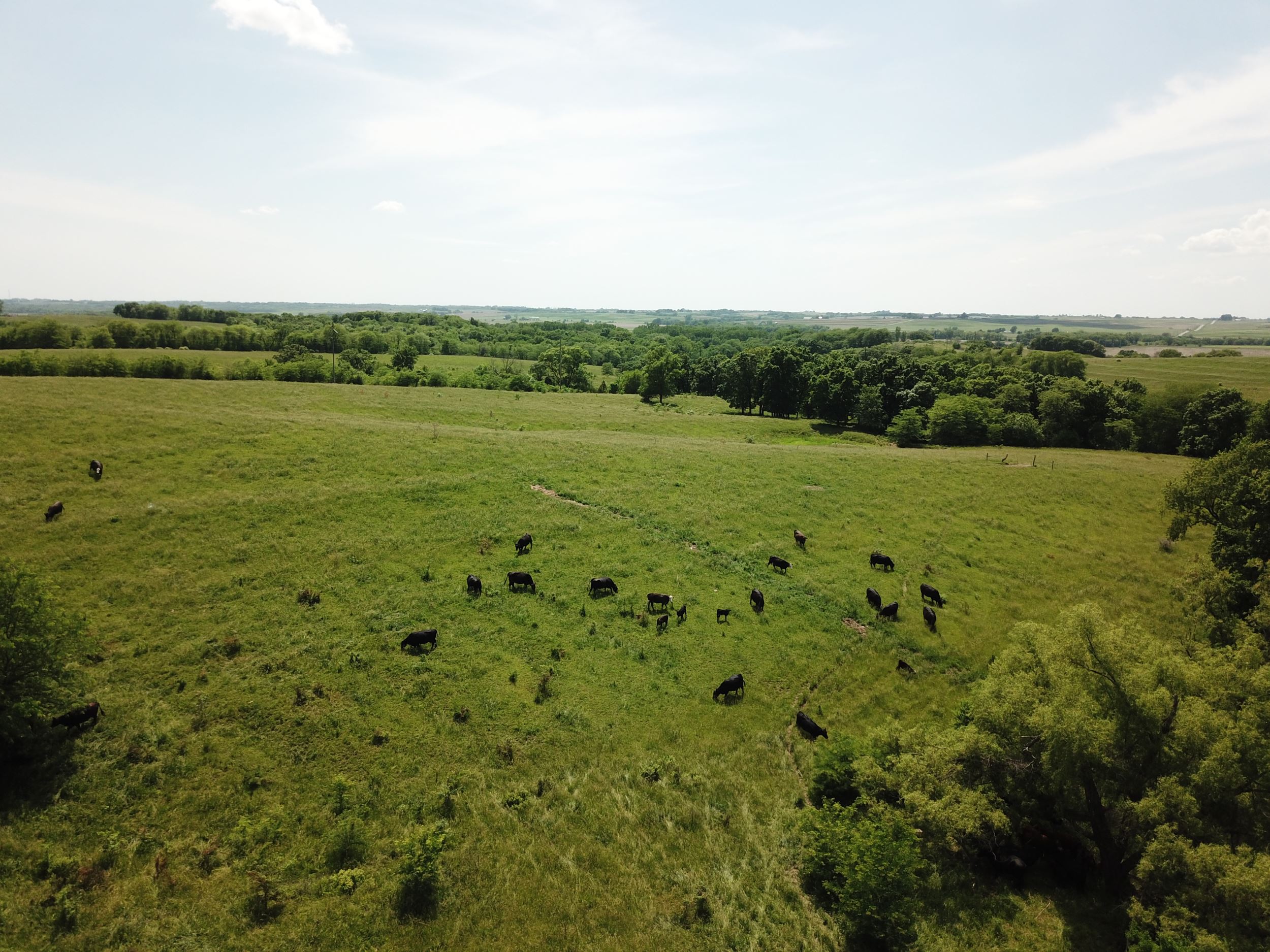Nature Knows Best
By Jessica Riebkes Clough, Land Projects Assistant on July 29, 2019 in Blog

Ask Seth Watkins to take you to his favorite spot on his cattle farm, and you’ll end up at a small, unnamed creek among old oaks. The banks of the creek slope softly and sweeping grass holds the soil in place. It’s here that Seth has turned over arrowheads and reflected on stories about his great-grandfather, who started the farm with a land grant after serving in the War of 1812.
“It weighs heavily on me to know that people lived here before, in harmony with the land,” Watkins said. “The creek is my responsibility to pay it forward.”
Pay it forward, he does. Since taking over fulltime management of the 301-acre farm in the 1990s, Watkins has implemented one conservation practice after another: cover crops, flash grazing, no-till, a diversified crop rotation, tree and native prairie plantings, and a major reduction in the farm’s fuel, fertilizer and herbicide usage.
One particularly tough winter early in his tenure on the land, Watkins planned his largest shift in management: next year, his cows would calve later in the spring. It was a risky move for the farm and an even bigger shift in mindset, but now it’s the norm for Pinhook Farm.
“We began working with nature, not against it,” Watkins said. “I started focusing on making the system work, not on managing the costs. When our farms are ecologically sound, that’s where we’ll have sustained profitability.”
Keeping the farm a viable, eco-and-economically sound operation hinges on much of the property staying in perennial grass. Now, that grass is here to stay forever. The Watkins family, in partnership with INHF and the Natural Resource Conservation Service (NRCS), worked together to protect Pinhook Farm through an Agricultural Land Easement (ALE). The ALE program, formerly The Farm and Ranch Lands Protection Program (FRPP), permanently protects agricultural lands, particularly those that implement conservation practices and elements of sustainability.
The NRCS provides both partial funding and oversight to this USDA program, making their partnership critical for using ALE in Iowa, and around the country.
“The ALE program allows NRCS to partner with local land trusts, like INHF, on a common mission: protecting more of the landscape,” said Sindra Jensen, NRCS easement programs coordinator.
INHF contributes a quarter of the funding for the project, while the landowner contributes the other quarter through the donated easement value. For Watkins, the ALE’s partnerships provide additional accountability.
“The easement keeps us from asking too much out of the land.”
The conservation practices Watkins has implemented over the years, as well as the permanent protection of the grassland, also benefits Watkins' neighbors downstream, all the way to the Gulf of Mexico.
Pinhook Farm is one of over twenty farms INHF has helped protect through the ALE/FRPP programs, and the first in Page County.
“Seth’s innovative, holistic approach is good for his cows and good for the environment,” said INHF Conservation Easement Director Erin Van Waus. “It’s also a priority for INHF to keep grass as grass, whether on a working farms, wildlife area or buffer along a creek, so this project was a win-win.”
Land protected by an ALE will remain viable agricultural land forever. The Watkins ALE preserves Pinhook Farm as grassland, ensuring that Watkins’ successors will be able to continue raising cows.
The NRCS provides both partial funding and oversight to this USDA program.